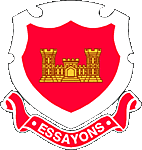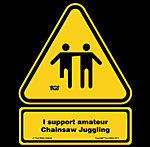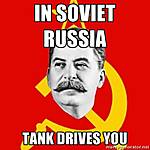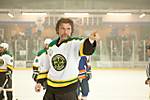
@ Keith: Well... probably, unless, of course, I do something else like...
"Pick some low-hanging fruit!"

I decided to do a couple of other easy tasks and take a little break from fabricating components like the generator. It's all got to be done one way or another, so some simpler stuff.
Really, what happened is that before I went and did a lot more work on filling and sanding in the rear corners of the hull side armor, I wanted to see how much would be visible once the air outlet louvers and rear hull roof supports were in place.
So, I built the PE air outlet louvers from the Voyager set PE35171. This is a pretty simple assembly which is a direct replacement for the kit parts.

I didn't encounter any real issues with building it. Do pay attention to the pattern of holes for the top louvers. There are three holes along the top edge and two holes along the bottom edge of each top louver, so they're not symmetrical and could be easily mixed up. Voyager does make a note of this in the instructions, so the info is there - just don't get on "auto pilot" and start gluing or soldering before you're sure of how the louvers are arranged.
I chose to glue this PE assembly into the upper rear hull armor plate and make it all into a removable sub-assembly for now.

If you're just building this more or less as designed, an easier way to get it all lined up would be to glue the rear upper hull plate into position. Then glue the two PE interior corner pieces into place. You could then easily get the louvers lined up with the slots in the PE corner pieces, building the PE assembly in situ inside the rear hull.
I also scratched up the support for the rear hull roof area over the gearbox compartment.

As near as I could tell from my reference photos, the vertical supports are not totally symmetrical. The middle support is off-center and lines up with the seam between the two center panels of the gearbox compartment roof. Note that these two panels are not symmetrical - the left / port panel is wider than the right / starboard side panel. My guess is that this was done so that the air outlet louver assemblies can be serviced, if needed. If the center bars of the louvers and the center roof support all lined up, then it would be impossible to remove the bolts holding the louver assembly together.
At any rate, it looks a little odd with none of these parts which look like they should be on the centerline of the tank off-set from the centerline and each other. However, going by the photos I have, this all seems correct (to AFV Club's credit!).
I've also added the "bridge" running from side to side under the rear edge of the armor roof plate between the engine and gearbox compartments. Flanges from this bridge support the edges of the gearbox roof panels and service doors, and the bridge, itself, serves as the mounting point for the fuel fillers (one on either side) and some other smaller components.
There's a good photo of this bridge on page 32, Ampersand's "The Churchill Tank: Part One: The Gun Tanks." (The photo is of a Mk.I, however, in the absence of better info, this is all I had to go with.)
Here's a view from the rear looking forward showing this bridge support.

The two semi-circular cutouts are for the lids of the fuel fillers which flip open from front to rear.
Finally, here are a couple of general views of the framing and roof supports and the air outlet louvers dry-fitted in place.


So, getting close to being done with the interior of the gearbox compartment. All that's left to do:
1) Turret Generator
2) Fuel Fillers x 2
3) Oil Filters x 2
4) Compressed Air Reservoir
5) Sheet metal sponson hole covers x 2 (each side)
6) Pneumatic, hydraulic, and electrical lines
And of course, painting and assembly!
Happy modeling!

























































